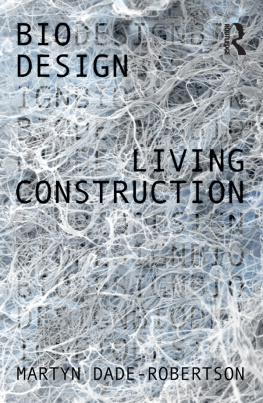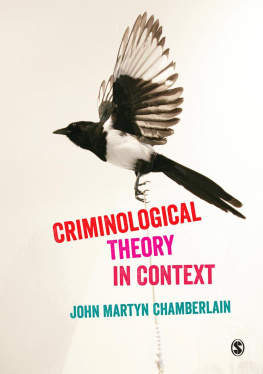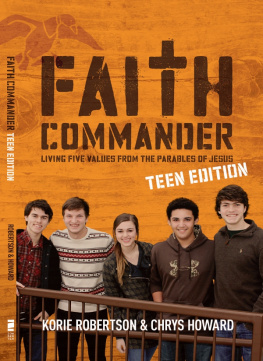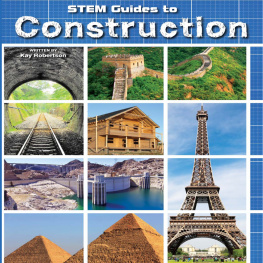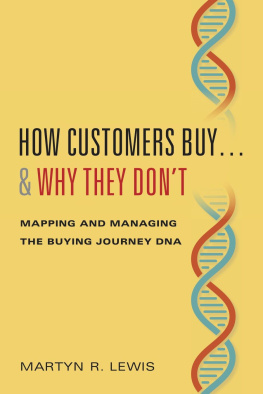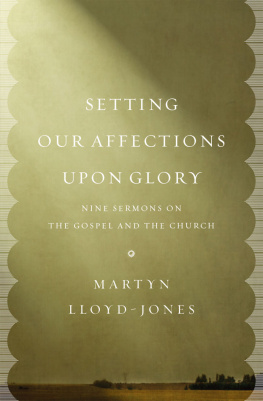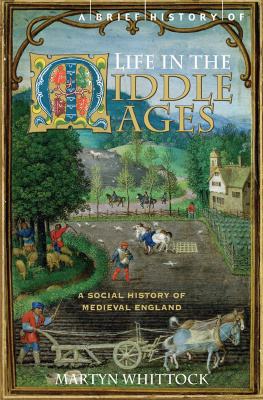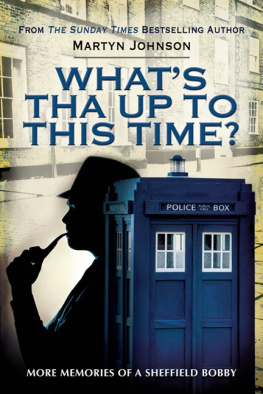Martyn Dade-Robertson - Living Construction
Here you can read online Martyn Dade-Robertson - Living Construction full text of the book (entire story) in english for free. Download pdf and epub, get meaning, cover and reviews about this ebook. year: 2021, publisher: Routledge, genre: Romance novel. Description of the work, (preface) as well as reviews are available. Best literature library LitArk.com created for fans of good reading and offers a wide selection of genres:
Romance novel
Science fiction
Adventure
Detective
Science
History
Home and family
Prose
Art
Politics
Computer
Non-fiction
Religion
Business
Children
Humor
Choose a favorite category and find really read worthwhile books. Enjoy immersion in the world of imagination, feel the emotions of the characters or learn something new for yourself, make an fascinating discovery.
- Book:Living Construction
- Author:
- Publisher:Routledge
- Genre:
- Year:2021
- Rating:4 / 5
- Favourites:Add to favourites
- Your mark:
- 80
- 1
- 2
- 3
- 4
- 5
Living Construction: summary, description and annotation
We offer to read an annotation, description, summary or preface (depends on what the author of the book "Living Construction" wrote himself). If you haven't found the necessary information about the book — write in the comments, we will try to find it.
Living Construction — read online for free the complete book (whole text) full work
Below is the text of the book, divided by pages. System saving the place of the last page read, allows you to conveniently read the book "Living Construction" online for free, without having to search again every time where you left off. Put a bookmark, and you can go to the page where you finished reading at any time.
Font size:
Interval:
Bookmark:
When I first pitched the idea of the Bio Design book series to Routledge, it was with some selfish intent. The idea of writing a full monograph of 80,000 (or more) words filled me with horror and flashbacks to my PhD. But writing 5000- to 8000-word journal papers didnt give me the space to properly explore my ideas. Twenty-five to thirty thousand words sounded like a sweet spot. How little I knew. This book turns out to have been one of the most difficult texts I have written (almost harder than my PhD). What started as a review, trying to sum up my ideas on biological construction and feature some of the work in my lab, became a wrestling match between my newfound interest in synthetic biology and my background as a designer with a humanities bent (I confess to my students that, at architecture school, I used to regularly fail my architectural technology exams). Ive written more than 80,000 words to get to this point and would (although not happily) write the whole thing again. This was a battle between the left and right sides of my brain, and it isnt clear who won. What is clear is that I couldnt have gotten this far without help.
Newcastle University has provided me, both as an undergraduate student and as an academic, with a nurturing environment to develop. Ive often not taken a conventional route, but when I asked John Pendlebury and Graham Farmer, the Heads of School and Department at the time, for a sabbatical to pursue an MSc degree in synthetic biology, it is still a mystery to me why they said yes. The experience, however, has been transformative, and I am forever grateful for the opportunity they gave me and the continued support of colleagues, especially Adam Sharr.
During my studies in this area, I want thank the staff and students on the synthetic biology course, especially Anil Wipat, Natalio Krasnogor and Wendy Smith and my co-students Zelda Mendelowitz, James Skelton and Stephen Bradley. Many of the ideas here have been developed in conversation with them.
Some of the projects I have described here are supported by research funding, including the pressure-sensing bacteria work, which has been funded by the Engineering and Physical Sciences Research Council through two grants: Computational Colloids (EP/N005791/1) and Thinking Soils (EP/R003629/1). These results described and the concepts developed are a big team effort, and special thanks should go to the team, including Anil Wipat, Helen Mitrani, Meng Zhang, Aurelie Guyet, Beate Christgen, Polly Moreland, Javier Rodriguez Corral, Jennifer Wright and Jamie Haystead. This work has also been supported by pilot projects resourced by both Newcastle and Northumbria University, and the Hub for Biotechnology in the Built Environment is funded by Research England. Thank you to Katia Zolotovsky and Merav Gazit for their permissions for was funded by the National Science Foundation Division of Materials Research (NSF DMR) under the grant #1508072 named Material and morphometric control of bacterial cellulose via genetic engineering post-processing and 3D printed molding.
Id also like to thank Lynn Rothschild (NASA Ames) and Jamie Davies (Edinburgh University). Both are scientists I have huge respect for, and this book has been enriched by conversations I have had with them. They have taken my (sometimes sketchy) ideas seriously. Thank you also to Marcos Cruz and Philip Beasley for many fascinating conversations and opening up new opportunities and networks.
While we like to talk about research-led teaching in academia, less focus is given to teaching-led research. Many of the ideas in the book have been developed in design studios and supervisions. I would need to radically increase the word limit of this book to cite them all, but special mention should be given to Carolina Ramirez-Figueroa, who was my first PhD student in Bio Design and a trailblazer at a time when we had few resources to do this sort of work, and Luis Hernan, who developed our first lab and helped build the group in challenging circumstances. The future of this field lies in the hands of PhD students like those in my group, and I would like to mention Thora Arnadottir, Dilan Ozkan, Sunbin Lee, Emily Birch and Aileen Hoenerloh. Of the dozens of undergraduate and postgraduate students I have supervised, I want to give a special mention to my master of architecture students, whose work on biomineralization is featured in : John Beattie, Alexander Lyon, Markus Ryden and Malcolm Welford.
Finally, to my family. My parents, whose love and support has underpinned this book and everything else I have written. To my children, who are my most advanced living construction experiments so far. And to my wife, Meng. The love of my life, my collaborator and my inspiration.

Introduction
In 2010, an article in the Mail Onlinepresented the work of a group of students who, the headline claimed, had developed a glue made from genetically-modified bacteria that can knit cracks in concrete back together (Firth, 2010). The undergraduate team, composed of bioscientists and computer scientists as well as engineers, were pioneers in a new field called synthetic biology. They had won a gold medal in the International Competition for Genetically Engineered Machines (iGEM) by designing and building a living system composed of bacteria cells which were capable of swimming deep into microscopic concrete cracks and then, using a chemical signalling process known as quorum sensing, commencing a process of biomineralization.
Font size:
Interval:
Bookmark:
Similar books «Living Construction»
Look at similar books to Living Construction. We have selected literature similar in name and meaning in the hope of providing readers with more options to find new, interesting, not yet read works.
Discussion, reviews of the book Living Construction and just readers' own opinions. Leave your comments, write what you think about the work, its meaning or the main characters. Specify what exactly you liked and what you didn't like, and why you think so.

